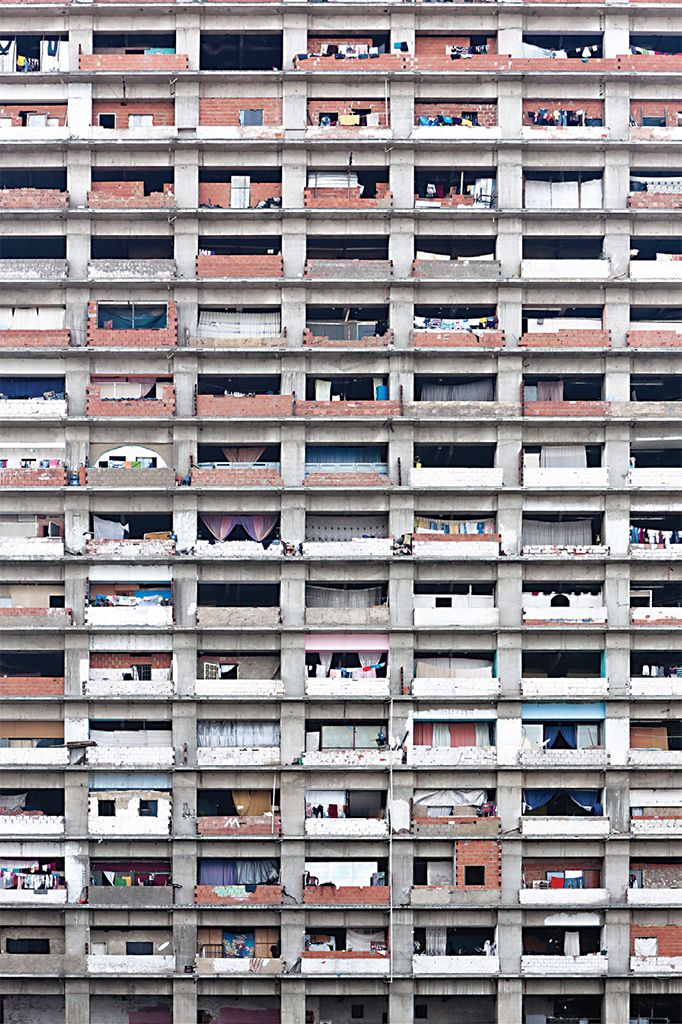Julian Rose on “Image Building” at the Parrish Art Museum – Artforum International

This most recent work is troubling in its implications for contemporary architecture. Iwan Baan’s Torre David #1, 2011, appears to be a harmlessly derivative makeover of a Gursky photograph like Avenue of Americas, but it’s one of the more unsettling images in the show. The rigid grid of a building’s facade rises in the near distance, practically flush with the picture’s frame. We are looking at what is, effectively, the world’s tallest favela, a skyscraper in Caracas that was abandoned, mid-construction, during an economic crisis in the early ’90s and occupied by squatters beginning in 2007. (The Venezuelan government evicted and relocated most of the residents in 2014.) By photographing the building in this way, Baan has reminded us that the material and spatial problems of the real world don’t go away simply because architects stop engaging with them—but he has done so inadvertently, by blatantly eliding those problems. The Torre David represents the profound disappointments of contemporary architecture, and by aestheticizing and “humanizing” its material realities, Baan is covering up these failures. (Readers who doubt that such a blunt reduction could possibly be Baan’s intention are encouraged to view his TED Talk on YouTube, “Ingenious Homes in Unexpected Places,” billed as a presentation of “glorious images celebrat[ing] humanity’s ability to survive and make a home—anywhere.”) Small wonder, then, that he is one of the most sought-after architectural photographers in the world today, employed by everyone from Elizabeth Diller to Rem Koolhaas, and that his images of the Caracas tower were part of the project that was rewarded with the Golden Lion at the 2012 Venice Architecture Biennale.
Source: Julian Rose on “Image Building” at the Parrish Art Museum – Artforum International